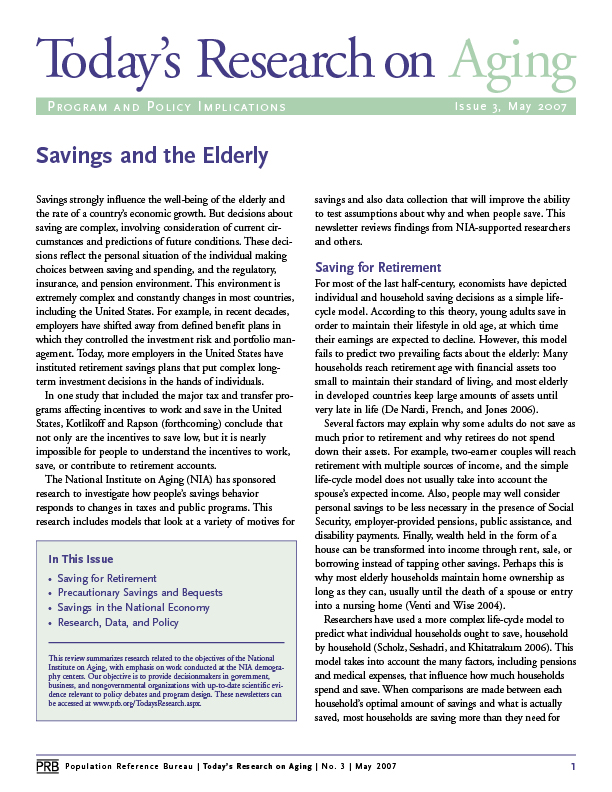This issue, “Savings and the Elderly,” reviews research from scientists funded by the National Institute on Aging on how people’s savings behavior responds to changes in taxes and public policy.
Savings strongly influence the well-being of the elderly and the rate of a country’s economic growth. But decisions about saving are complex, involving consideration of current cir-cumstances and predictions of future conditions. These decisions reflect the personal situation of the individual making choices between saving and spending, and the regulatory, insurance, and pension environment. This environment is extremely complex and constantly changes in most countries, including the United States. For example, in recent decades, employers have shifted away from defined benefit plans in which they controlled the investment risk and portfolio management. Today, more employers in the United States have instituted retirement savings plans that put complex long-term investment decisions in the hands of individuals.
In one study that included the major tax and transfer programs affecting incentives to work and save in the United States, Kotlikoff and Rapson (forthcoming) conclude that not only are the incentives to save low, but it is nearly impossible for people to understand the incentives to work, save, or contribute to retirement accounts.
The National Institute on Aging (NIA) has sponsored research to investigate how people’s savings behavior responds to changes in taxes and public programs. This research includes models that look at a variety of motives for savings and also data collection that will improve the ability to test assumptions about why and when people save. This newsletter reviews findings from NIA-supported researchers and others.
In This Issue:
- Saving for Retirement
- Precautionary Savings and Bequests
- Savings in the National Economy
- Research, Data, and Policy
This e-newsletter is the third in a series funded by the University of Michigan Demography Center.


 ">
">